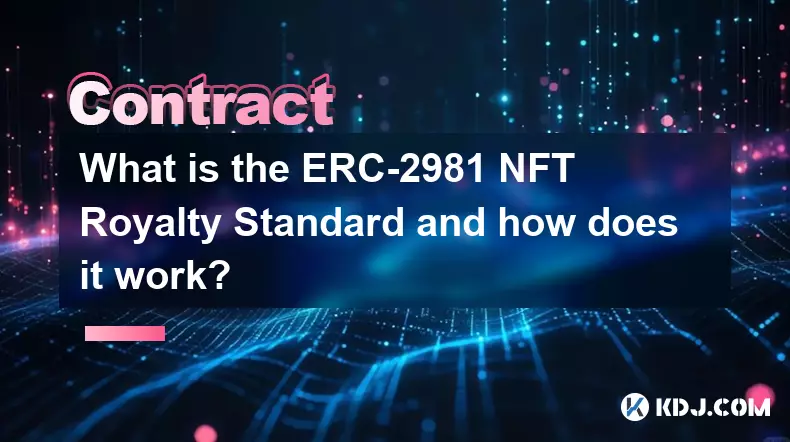-
 bitcoin
bitcoin $99296.318777 USD
-2.82% -
 ethereum
ethereum $3203.465899 USD
-6.84% -
 tether
tether $0.999590 USD
-0.03% -
 xrp
xrp $2.308913 USD
-4.00% -
 bnb
bnb $922.788929 USD
-3.53% -
 solana
solana $144.020807 USD
-5.89% -
 usd-coin
usd-coin $0.999798 USD
0.00% -
 tron
tron $0.291590 USD
-1.12% -
 dogecoin
dogecoin $0.163780 USD
-4.46% -
 cardano
cardano $0.526919 USD
-4.40% -
 hyperliquid
hyperliquid $37.888865 USD
-2.24% -
 bitcoin-cash
bitcoin-cash $510.515457 USD
-1.08% -
 chainlink
chainlink $14.436987 USD
-5.63% -
 stellar
stellar $0.267345 USD
-4.77% -
 unus-sed-leo
unus-sed-leo $9.175222 USD
0.53%
What is the function of selfdestruct and what are its security implications?
The `selfdestruct` function in Solidity allows a contract to terminate and send its Ether balance to an address, but improper use can lead to fund loss or exploits.
Nov 13, 2025 at 08:20 pm

Understanding the Role of Selfdestruct in Smart Contracts
1. The selfdestruct function is a built-in feature in Solidity that allows a smart contract to terminate itself and send its remaining Ether balance to a designated address. This operation permanently removes the contract’s code from the blockchain, rendering it inactive. Once triggered, no further interactions with the contract are possible, making this an irreversible action.
2. Developers often use selfdestruct during contract lifecycle management, especially when deploying upgradeable systems. In proxy-based architectures, legacy contracts may be retired using selfdestruct after migrating logic to a new implementation. This helps clean up unused code and reduce network clutter.
3. Another common application is in time-bound contracts such as crowdfunding campaigns or temporary escrow services. After fulfilling their purpose, these contracts can invoke selfdestruct to release funds and dissolve themselves, ensuring they don’t remain dormant on the blockchain indefinitely.
4. The function requires specifying a beneficiary address where any leftover Ether will be transferred. If the contract holds tokens instead of Ether, those assets may become inaccessible unless explicitly handled before destruction, leading to permanent loss if not properly managed.
Security Risks Associated with Selfdestruct
1. A major concern is unauthorized access to the selfdestruct functionality. If access controls are poorly implemented, malicious actors could trigger the function prematurely, wiping out the contract and stealing funds. Contracts must enforce strict role-based permissions to prevent such exploits.
2. Even with proper authentication, logic flaws in conditional checks can allow attackers to manipulate state and gain eligibility to call selfdestruct. For example, a contract that allows destruction after a certain block number might be exploited if that condition is too easily satisfied or not properly safeguarded.
3. In upgradeable systems, accidental use of selfdestruct in a proxy’s implementation contract can lead to catastrophic failures. Since proxies delegate calls to implementations, calling selfdestruct within a delegated function may destroy the proxy itself, resulting in total loss of user funds and functionality.
4. Some protocols rely on the continued existence of contract addresses for accounting or verification purposes. Unexpected self-destruction can break integrations with other decentralized applications, creating inconsistencies across the ecosystem.
Historical Incidents Involving Selfdestruct Exploits
1. One notable case involved a decentralized exchange whose migration mechanism allowed old staking contracts to be destroyed after upgrades. Due to a reentrancy vulnerability combined with selfdestruct, attackers drained liquidity by forcing early termination and redirecting payouts to attacker-controlled wallets.
2. Another project experienced partial collapse when a developer mistakenly deployed a test contract with a publicly callable selfdestruct function into production. Within minutes, a bot detected the vulnerability and triggered the function, wiping out millions in locked assets.
3. In a high-profile DAO attack, although not directly caused by selfdestruct, the aftermath highlighted how destructive capabilities in smart contracts could be weaponized. This led to broader discussions about limiting or deprecating functions like selfdestruct to enhance overall network safety.
Frequently Asked Questions
What happens to a contract's storage after selfdestruct is called?After selfdestruct executes, the contract’s code and storage are wiped from the Ethereum state. Any data stored in the contract becomes irretrievable, though historical records remain accessible through blockchain explorers and archival nodes.
Can a selfdestructed contract be revived?No. Once a contract is destroyed, it cannot be restored. The same address cannot host a new contract unless someone sends a transaction that deploys code to it, but this would be an entirely new instance with no connection to the original.
Does selfdestruct affect token balances held by the contract?The function only transfers Ether. If the contract holds ERC-20 or other tokens, those remain stuck unless withdrawal functions are executed prior to destruction. Failure to handle token extrication results in permanent loss.
Is selfdestruct still available in modern Solidity versions?Yes, selfdestruct remains part of Solidity as of current versions. However, there have been proposals to deprecate or restrict it due to security concerns. Developers are encouraged to avoid it unless absolutely necessary and to implement rigorous safeguards when used.
Disclaimer:info@kdj.com
The information provided is not trading advice. kdj.com does not assume any responsibility for any investments made based on the information provided in this article. Cryptocurrencies are highly volatile and it is highly recommended that you invest with caution after thorough research!
If you believe that the content used on this website infringes your copyright, please contact us immediately (info@kdj.com) and we will delete it promptly.
- Crypto Carnage: Navigating Selling and Liquidations in a Wild Market
- 2025-11-14 16:50:01
- Mohammed Siraj's First Spell Woes: An India Teammate's Critique
- 2025-11-14 14:40:02
- BTC, ETH, and Altcoin Picks: Navigating the Crypto Landscape
- 2025-11-14 14:50:01
- Coin Toss Tales: Temba Bavuma's Wager and India vs. SA Showdown
- 2025-11-14 12:50:01
- Shubman Gill, WTC Final, and the Coin Toss: A New Yorker's Take
- 2025-11-14 15:05:01
- Aerodrome Takes Flight: Unifying Ethereum DeFi Liquidity Across Chains
- 2025-11-14 15:10:02
Related knowledge

What is a Denial of Service (DoS) attack in a smart contract and what are its common forms?
Nov 10,2025 at 05:20am
Understanding Denial of Service in Smart Contracts1. A Denial of Service (DoS) attack in the context of smart contracts refers to a scenario where a m...

What is a cryptographic nonce used for in transaction signing?
Nov 11,2025 at 05:59am
Understanding Cryptographic Nonces in Blockchain Transactions1. A cryptographic nonce is a random or pseudo-random number used only once in the contex...

How does inheritance work in Solidity smart contracts?
Nov 11,2025 at 10:40pm
Inheritance in Solidity: Building Modular Smart Contracts1. Inheritance in Solidity allows one contract to adopt the properties and functions of anoth...

What is the difference between an Externally Owned Account (EOA) and a Contract Account?
Nov 13,2025 at 04:00am
Understanding Externally Owned Accounts (EOA)1. An Externally Owned Account is controlled directly by a private key, which means only the holder of th...

What is the ERC-2981 NFT Royalty Standard and how does it work?
Nov 13,2025 at 05:39am
Understanding the ERC-2981 NFT Royalty Standard1. The ERC-2981 standard is a proposed Ethereum Request for Comment that introduces a royalty mechanism...

What is a Minimal Proxy Contract (EIP-1167) and how does it save gas on deployment?
Nov 12,2025 at 11:39am
What is a Minimal Proxy Contract (EIP-1167)?1. A Minimal Proxy Contract, standardized under Ethereum Improvement Proposal (EIP) 1167, is a lightweight...

What is a Denial of Service (DoS) attack in a smart contract and what are its common forms?
Nov 10,2025 at 05:20am
Understanding Denial of Service in Smart Contracts1. A Denial of Service (DoS) attack in the context of smart contracts refers to a scenario where a m...

What is a cryptographic nonce used for in transaction signing?
Nov 11,2025 at 05:59am
Understanding Cryptographic Nonces in Blockchain Transactions1. A cryptographic nonce is a random or pseudo-random number used only once in the contex...

How does inheritance work in Solidity smart contracts?
Nov 11,2025 at 10:40pm
Inheritance in Solidity: Building Modular Smart Contracts1. Inheritance in Solidity allows one contract to adopt the properties and functions of anoth...

What is the difference between an Externally Owned Account (EOA) and a Contract Account?
Nov 13,2025 at 04:00am
Understanding Externally Owned Accounts (EOA)1. An Externally Owned Account is controlled directly by a private key, which means only the holder of th...

What is the ERC-2981 NFT Royalty Standard and how does it work?
Nov 13,2025 at 05:39am
Understanding the ERC-2981 NFT Royalty Standard1. The ERC-2981 standard is a proposed Ethereum Request for Comment that introduces a royalty mechanism...

What is a Minimal Proxy Contract (EIP-1167) and how does it save gas on deployment?
Nov 12,2025 at 11:39am
What is a Minimal Proxy Contract (EIP-1167)?1. A Minimal Proxy Contract, standardized under Ethereum Improvement Proposal (EIP) 1167, is a lightweight...
See all articles










































































